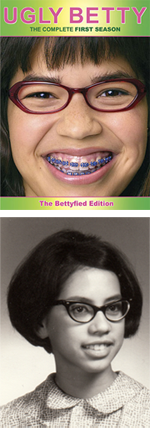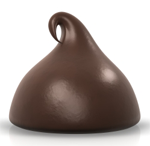The Next Big Thing—Skinny, awkward brown girl
Wendy Call, author of No Word for Welcome (winner of the Grub Street 2011 National Book Prize in Non-Fiction), tagged me in the Internet chain game in which writers answer a set of questions about their next writing project. You can read Wendy’s lovely responses here. Her next book promises to be a lush and meditative look at the natural world and our relationship to it. I was also tagged by the delightful Kim Fay, author of The Map of Lost Memories, a 2013 Edgar Award finalist for Best First Novel by an American Author.
I, in turn, am tagging Alma Garcia, Allison Green, and Maria Victoria. Their work is provocative, intelligent, and absorbing, and I eagerly await their next big thing.
In the meantime, here’s a quick look at my next thing.
What is the working title of your book?
The Education of Angie Rubio
Where did the idea come from for the book?
Over the years I’ve written short pieces about this particular character, Angie Rubio, a social outcast who is clumsily earnest (I hope, endearingly so) in her attempts to fit in and understand the world and her place in it. She’s never quite in synchrony with her peers, entering kindergarten without first knowing how to skip, joining the Brownies only to be taunted for being a brown Brownie, suffering a Toni Home Perm when she’d really like to look like Hayley Mills in the original Parent Trap and discover a separated-at-birth blond, wavy-haired twin sister with whom to bond and engage in lovable hijinks.
After I’d written several of these stories, I decided I wanted to fashion them into a novel, since novels are more the fashion than short stories. So I’m pushing and pulling, stretching, flipping, spinning, switching and stitching the thing so that the mini-arcs in the individual stories are unified by something resembling a central, sweeping narrative.
What genre does your book fall under?
Fiction
 Which actors would you choose to play your characters in a movie rendition?
Which actors would you choose to play your characters in a movie rendition?
I need a cast of brown actors. They will look ordinary and unglamorous. No Eva Longoria or Jessica Alba. No Selena Gomez. No Mario Lopez. Though I do wish there was a role for the marvelous Alfred Molina. Sadly, as they say in rejection slips, his work doesn’t fit our needs. On the other hand, Ana Ortiz who played Hilda Suarez on Ugly Betty would be perfect as Aunt Nelda in The Education of Angie Rubio. Coincidentally, I was Ugly Betty when I was in junior high and high school, though my braces came off in eighth grade. The other actors will be unknown, pero muy talentosos. They will make a kick-ass indie película.
Right now there is interest from an indie film director to adapt my novel When the de la Cruz Family Danced for the screen. If it ever comes to pass, and I hope it does, it will also require a cast of brown actors. I would really like my fiction to be the source of employment to whole troupes of Latino and Filipino actors.
What is the one-sentence synopsis of your book?
A young Mexican-American girl learns life lessons of winning and losing, belonging and not belonging, and overcoming divisions caused by race and gender as she makes her awkward way from kindergarten through high school.
How long did it take you to write the first draft of your manuscript?
I’m still working on it. I wrote the first story sometime back in 2005 and have added others over the years. The pieces have been coming together slowly because I had also been working on When the de la Cruz Family Danced, my novel published in 2011, and my short story collection, which is still twiddling its figurative thumbs waiting for acceptance by a publisher. I expect to finish a full draft of The Education of Angie Rubio by the end of the summer.
Who or what inspired you to write this book?
 The theme of belonging—or not belonging—occurs frequently in my work. The source, I believe, is my own experience growing up. I was shy, awkward, and funny-looking. At a certain age, I became aware of skin color and, self-conscious about my brown skin, grew a chocolate chip on my shoulder. Over the years I’ve chipped away at the chip so all that’s left is a beauty mark just above the right clavicle.
The theme of belonging—or not belonging—occurs frequently in my work. The source, I believe, is my own experience growing up. I was shy, awkward, and funny-looking. At a certain age, I became aware of skin color and, self-conscious about my brown skin, grew a chocolate chip on my shoulder. Over the years I’ve chipped away at the chip so all that’s left is a beauty mark just above the right clavicle.
What else about your book might pique the reader’s interest?
Angie’s education begins in the mid-fifties and goes into the early seventies, so if you’re a baby boomer, there will be plenty of cultural and social references to make you nostalgic for the bad (as in groovy) old days.  If you’re a Gen-Xer or Millennial, you can get your retro on. There will be beehives, bell bottoms, platforms and flares, Sam Cooke, the Beatles, and the Fifth Dimension. And as Angie Rubio experiences the small agonies and triumphs of her life at school and at home, mondo agonies and triumphs—the JFK assassination, Watts, and women’s liberation—are happening in the background on the family’s Zenith walnut-veneered console TV. Angie’s story takes place in the fictional little city of Kimball Park, the setting of both my first novel and my story collection and the stand-in for the place I grew up—National City, aka Nasty City, which still has a hold on me even though I left thirty-six years ago.
If you’re a Gen-Xer or Millennial, you can get your retro on. There will be beehives, bell bottoms, platforms and flares, Sam Cooke, the Beatles, and the Fifth Dimension. And as Angie Rubio experiences the small agonies and triumphs of her life at school and at home, mondo agonies and triumphs—the JFK assassination, Watts, and women’s liberation—are happening in the background on the family’s Zenith walnut-veneered console TV. Angie’s story takes place in the fictional little city of Kimball Park, the setting of both my first novel and my story collection and the stand-in for the place I grew up—National City, aka Nasty City, which still has a hold on me even though I left thirty-six years ago.
By the way, my essay about National City, first published in Kartika Review (Winter 2011) also appears in the anthology New California Writing 2013 due out April 2013. Big thanks to the editors of both publications.